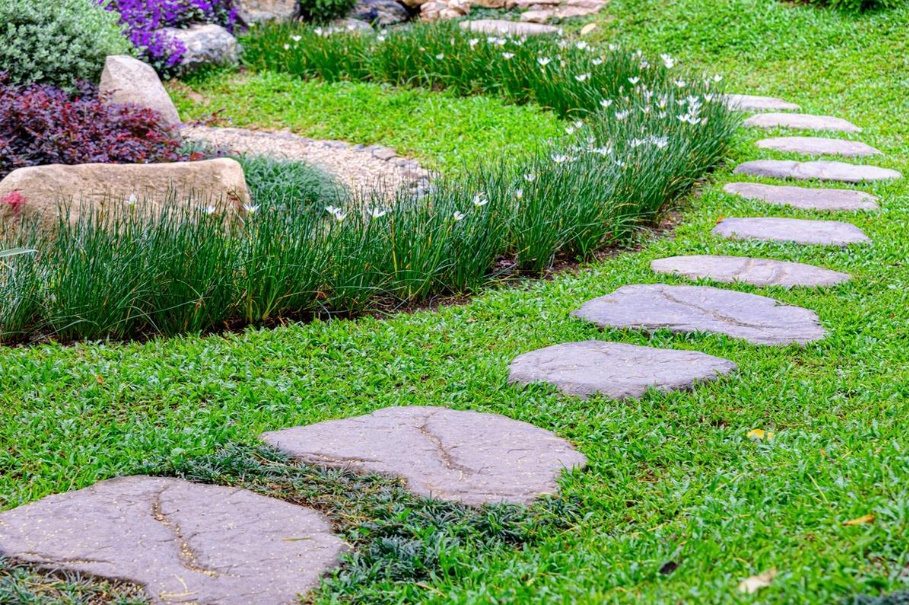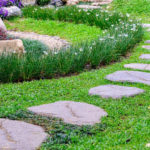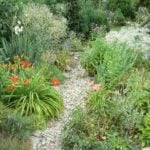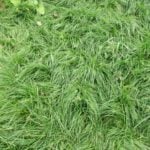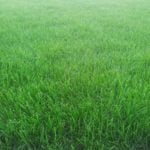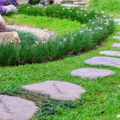A smooth green lawn at the house is the pride of every summer resident. We diligently grow the lawn, spend a lot of money and time on care to get the perfect grassy surface. And during operation, it becomes clear that it is simply inconvenient to walk around the lawn every time so as not to spoil it. After taking a shortcut several times, each family member understands that it is much easier to cross. So there are trails and bald spots on the coating. What to do with them?
You can try to cultivate willpower — and deny yourself the most convenient movement around the site. But the most reasonable thing is to turn the paved trails into comfortable and safe paths that will shorten the route and decorate the space. We will tell you what options can be built in the middle of the lawn with minimal costs.
Usually, the device of a road-path network is understood as a number of rather labor-intensive measures associated with digging a deep trough, acquiring a large amount of construction materials. When we talk about creating paths on the lawn, we mean laying paths that do not complicate the process of mowing the lawn, the installation of which is associated with minimal damage to the lawn covering.
1. Walking track
In this variant, the paving elements are laid so that when walking, they step approximately on their middle. Usually they are placed at a distance of 60 cm between the centers of each element (this is the size of an adult’s step). You can lay out a path made of wood cuts, concrete slabs, artificial or natural stones and other suitable materials.

Avoid smooth surfaces, giving preference to rough ones — so that it is not slippery for you to walk. It is desirable to select the dimensions of the elements approximately as follows: length and width — 30 × 30 cm or 40 × 40 cm, thickness — 4-6 cm (for wood cuts — 10-15 cm, since they are laid with a deepening). Wood will last much less than slabs of concrete or stone. Processing it with special preparations that prevent rotting can extend the service life of the cuts.
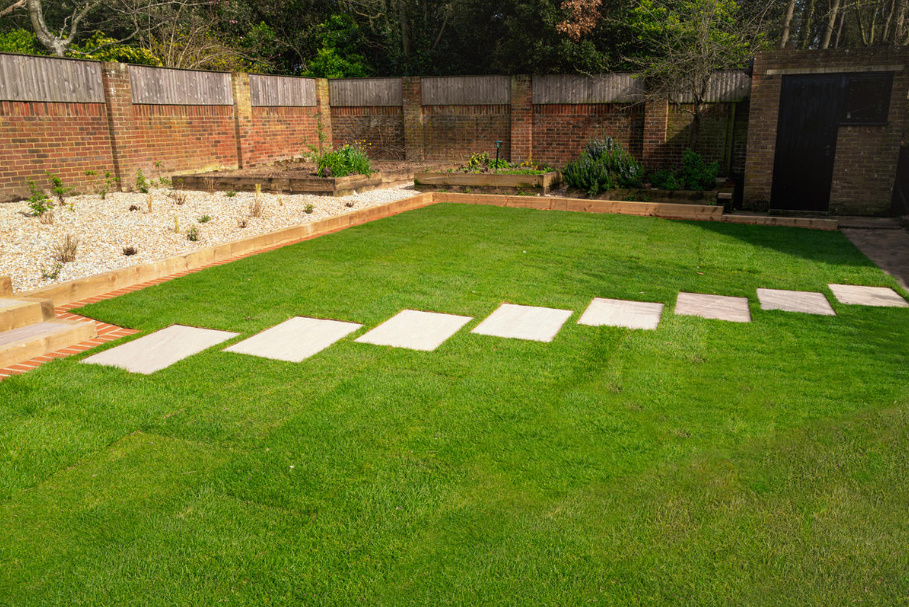
The walking paths are easily mounted directly on the existing lawn, harmoniously fit into the appearance of the garden of any style direction. They are practical — provided they are correctly installed, they do not crack and do not bulge after winter, they do not need a curb, and water does not stagnate on them.
There are two main disadvantages — it is difficult to clean them from snow in winter, it is inconvenient to carry a garden wheelbarrow on them. It should also be taken into account the fact that the size of the step in the elderly and children is less than that of an adult, which can create some discomfort when moving.
Remember: secondary and connecting paths can be stepping paths, but not the main paths that are supposed to be used all year round and move garden equipment and wheeled equipment along them.
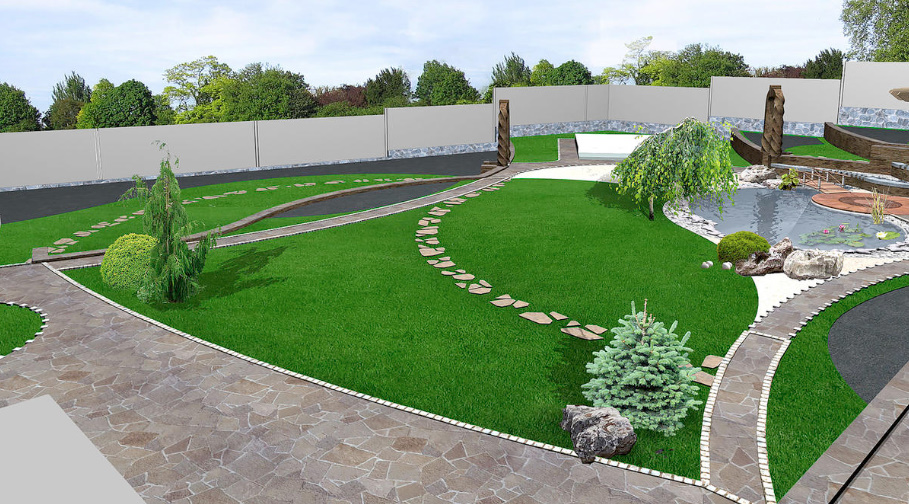
The main stages of the construction of a walking track
1. Determine the direction of the track and bends. The easiest way to do this is with pegs, a thick cord or a garden hose.
2. Select the material and calculate its quantity, taking into account the preferred size of each element and the distance between them.
3. The paving elements are laid in the direction and marking is carried out directly on the lawn with a shovel, cutting through the turf along the contour at the place of laying each part.
4. Remove the turf and soil at the place of laying the elements. The thickness of the removed layer is calculated according to the scheme: the thickness of the tile (or sawn) plus a layer of sand of at least 5 cm.
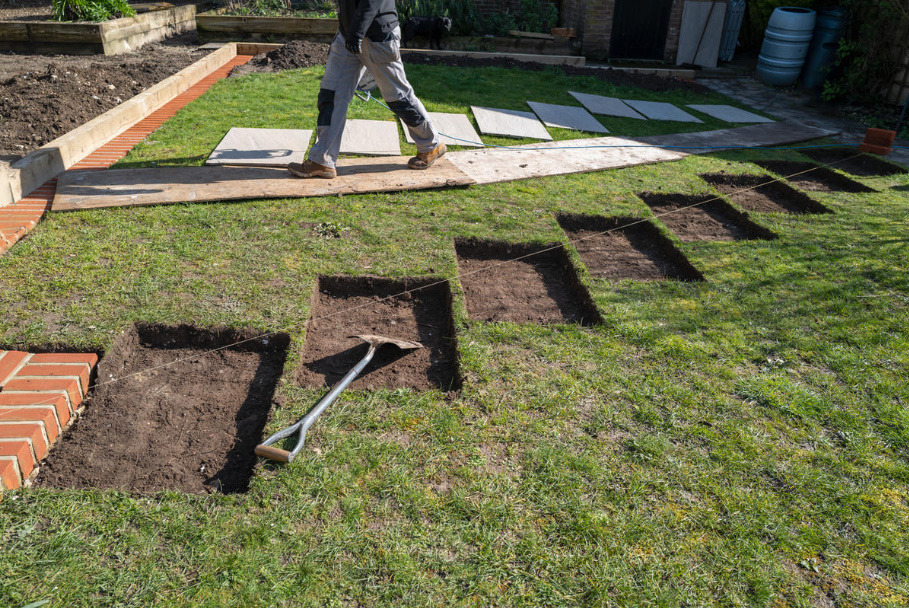
5. Lay a sand pillow. It needs to be moistened, leveled and compacted.
6. Each paving element is laid on sand, tightly driven into the prepared place with a mallet.
7. It is extremely important to determine the horizontal position of each element using a level. Carry out the installation so that the tile is located at ground level, otherwise problems will be created when mowing grass.
8. The cracks along the contour are filled with sand to ensure the removal of excess moisture.
2. Filling on the lawn
Such a track can be made even from chips or bark (choose the largest fraction), shells of pine nuts. These materials have a feature — they can stick to shoes, and with a thick layer, pits will appear on the coating. A coating of crushed stone or stone filling (of any aesthetic and reliable breed) will be more reliable, it will also withstand the movement of a garden wheelbarrow. All filling options require restrictions in the form of curbs or special tapes dug into the ground. Otherwise, the coating will have an incomplete appearance, and the material will quickly crumble on the sides, drowning in the lawn.
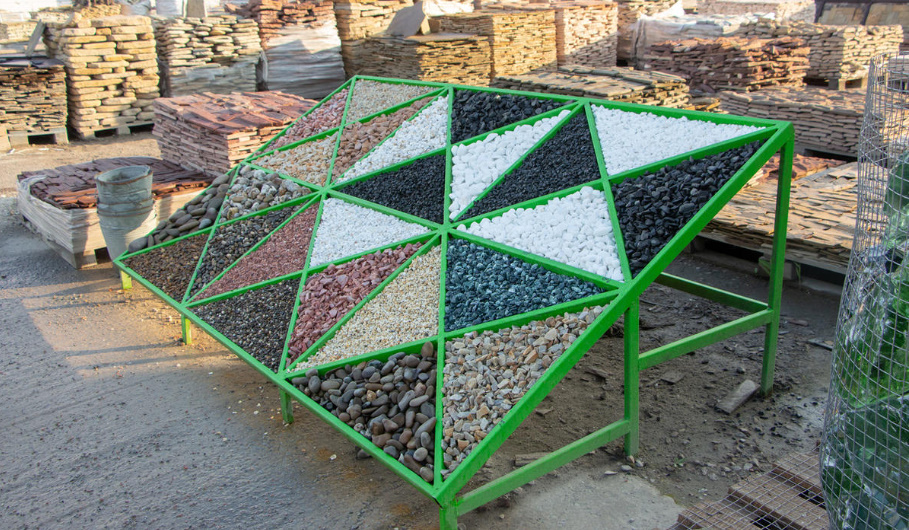
Such tracks have a number of advantages:
- they are budget-friendly,
- quick to install,
- and more convenient for people with non-standard step lengths (for children and the elderly).
There are also disadvantages:
- it is impossible to clean them from snow,
- it is difficult to collect foliage and other litter,
- not everyone will be pleased to walk on them barefoot.
